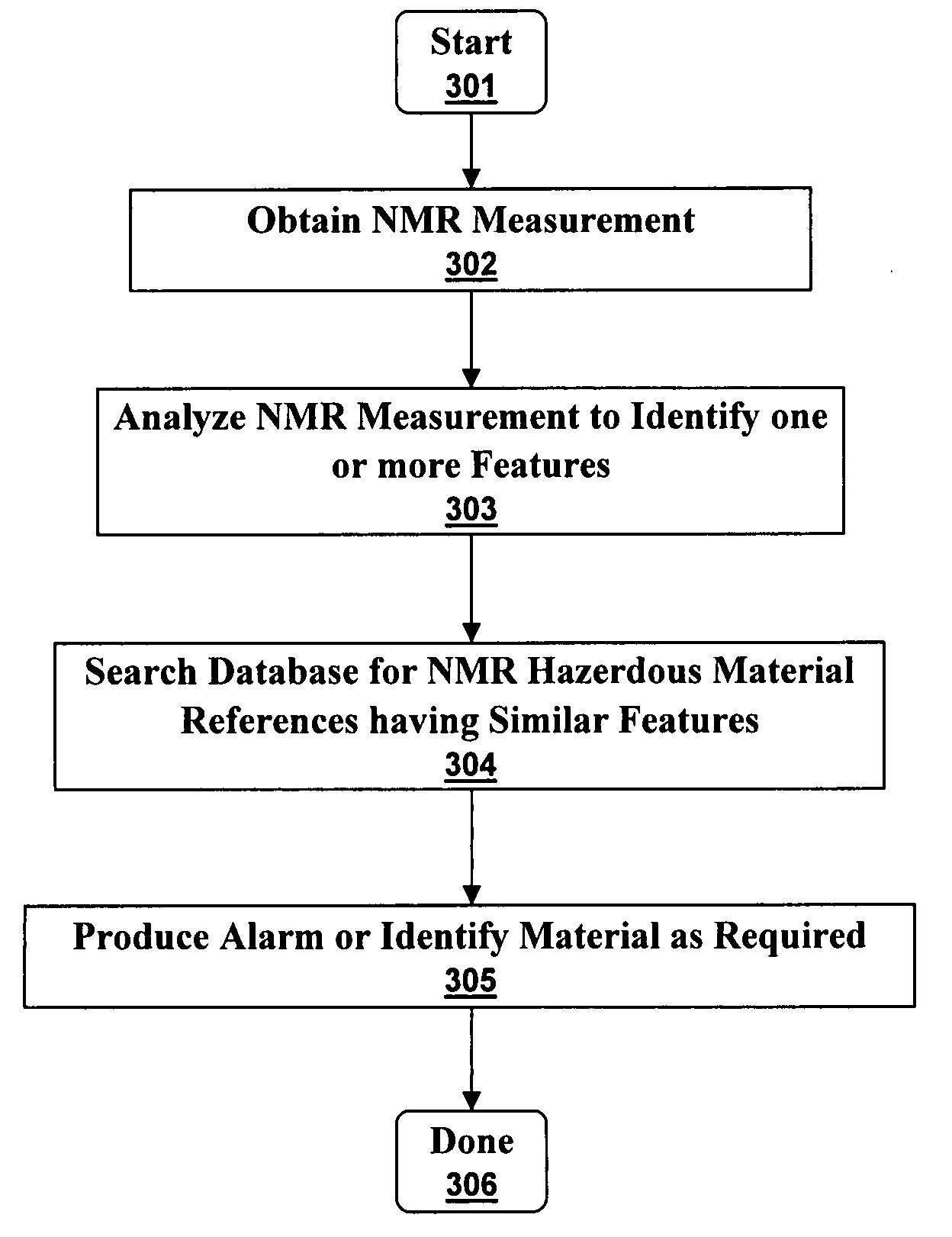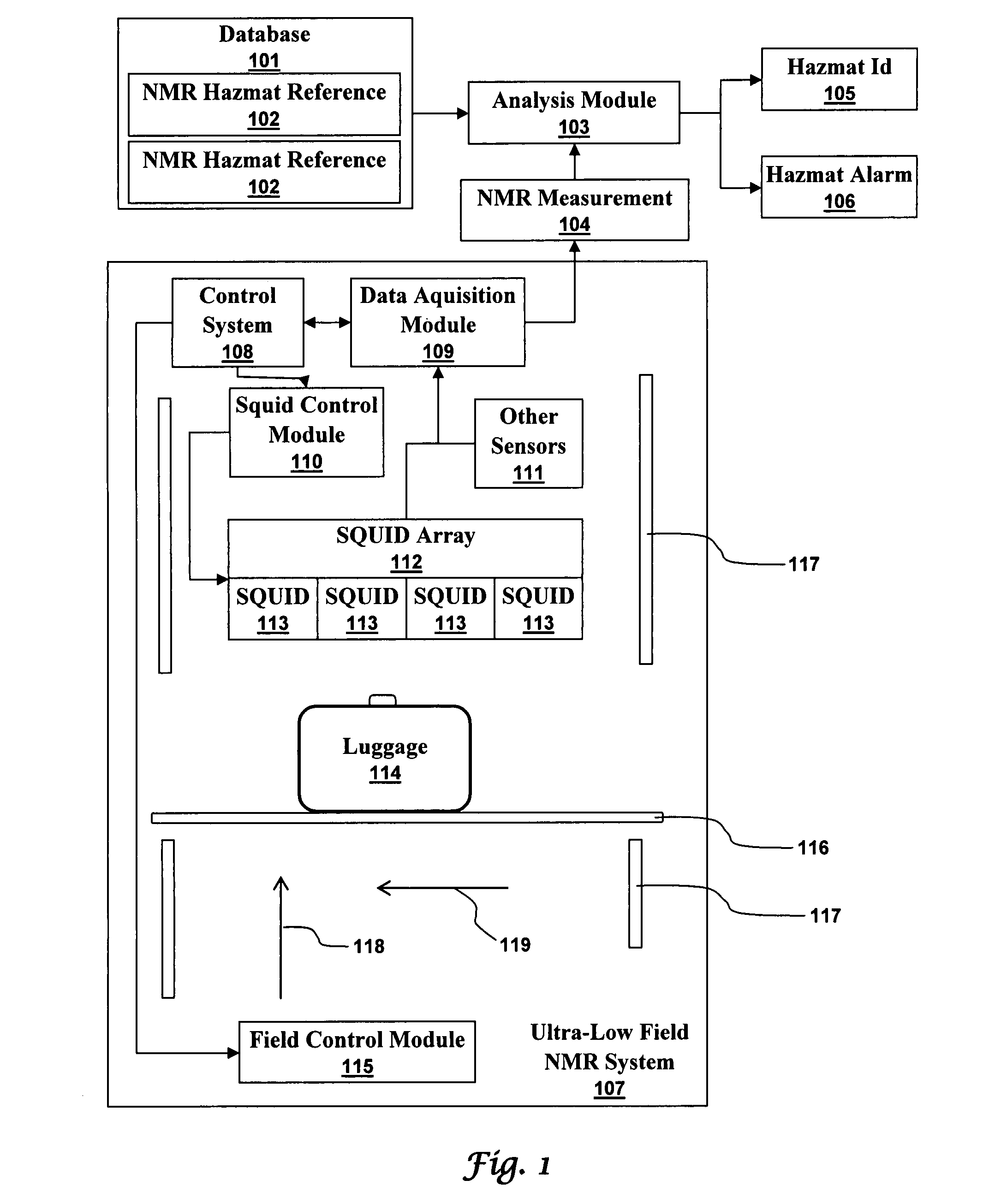Ultra-low field nuclear magnetic resonance and magnetic resonance imaging to discriminate and identify materials
a magnetic resonance imaging and ultra-low field technology, applied in the field of magnetic resonance imaging, can solve the problems of difficult to distinguish certain explosives from shampoo and soap, detailed searches can identify many threats, etc., and achieve the effect of improving signal-to-nois
- Summary
- Abstract
- Description
- Claims
- Application Information
AI Technical Summary
Benefits of technology
Problems solved by technology
Method used
Image
Examples
Embodiment Construction
[0018]The particular values and configurations discussed in these non-limiting examples can be varied and are cited merely to illustrate embodiments and are not intended to limit the scope of the invention.
[0019]An ultra-low field NMR system can non-invasively examine containers. Database matching techniques can then identify hazardous materials within the containers. Ultra-low field NMR systems are ideal for this purpose because they do not require large powerful magnets and because they can examine materials enclosed in conductive shells and lead shells. The NMR examination technique can be combined with ultra-low field NMR imaging where an NMR image is obtained and analyzed to identify target volumes. Spatial sensitivity encoding techniques can then be used to identify their contents.
[0020]FIG. 1 illustrates a system for examining luggage 114 for hazardous materials in accordance with aspects of the embodiments. Luggage 114 can be conveyed on a carrier 116 through an ultra-low fi...
PUM
| Property | Measurement | Unit |
|---|---|---|
| Larmor frequency | aaaaa | aaaaa |
| NMR | aaaaa | aaaaa |
| temperature | aaaaa | aaaaa |
Abstract
Description
Claims
Application Information
 Login to View More
Login to View More - R&D
- Intellectual Property
- Life Sciences
- Materials
- Tech Scout
- Unparalleled Data Quality
- Higher Quality Content
- 60% Fewer Hallucinations
Browse by: Latest US Patents, China's latest patents, Technical Efficacy Thesaurus, Application Domain, Technology Topic, Popular Technical Reports.
© 2025 PatSnap. All rights reserved.Legal|Privacy policy|Modern Slavery Act Transparency Statement|Sitemap|About US| Contact US: help@patsnap.com



